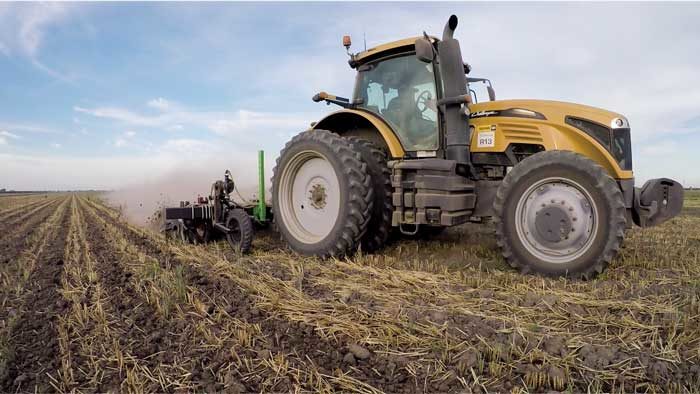No-Till Farmer
Get full access NOW to the most comprehensive, powerful and easy-to-use online resource for no-tillage practices. Just one good idea will pay for your subscription hundreds of times over.

RENT AND BORROW. Jeff Mitchell says private-sector technical service providers have helped increase the adoption of no-till and strip-till in California by renting and borrowing equipment like this strip-till finishing tool so farmers can try new farming methods.
As a conservation educator in California, Jeff Mitchell knows the farmers he works with are facing challenges highly specific to that part of the U.S., thanks to semiarid conditions and limited annual rainfall
“California is a tremendously diverse region,” says Mitchell, who’s worked as a cropping systems specialist with the University of California, Davis for nearly 3 decades. “Historically, it’s a phenomenally productive region. California leads the U.S. in the production of a range of crops. These systems, however, are very reliant on intensive disturbance.”
While much of the world began to embrace no-till starting in the 1960s, Mitchell says progress toward reduced disturbance systems in California has been more recent.
“Those changes have only occurred in the last 15 years or so,” he says.
That mindset shift can be attributed in part to the support and guidance farmers in California have received from farmers throughout the U.S. and in other parts of the world.
“A great number of the truly inspirational pioneers have been part of our progress with no-till and strip-till here in California,” Mitchell says. “We’re grateful and indebted to them all, including from areas like Australia and parts of the Midwest, where the rainfall is quite similar what we get in California.
“We’ve also had the good fortune of visiting and learning from people in South American countries like Brazil, Argentina and Paraguay, where there’s been considerable progress on reduced disturbance systems.”
One significant learning experience Mitchell had in South America involved processing…